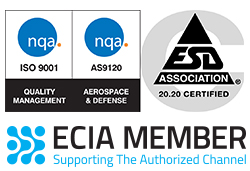FTIR
This test is a very complex system that is used to evaluate the topography of a component and to make a determination about the authenticity of its surface.
DECAPPING
The surface decapping systems we use are employed to remove the material surrounding the internal circuitry of a component. This allows engineering to determine whether the die is the correct part number and the revision level for that component.
XRF-ROHS TESTING
Used to test and verify whether the component has any of the (6) elements banned by the RoHS directive. Its primary use, however, is to determine whether the lead plating is lead-based or lead-free. Some customers require the leads be leaded rather than lead-free. The XRF system will analyze the leads, make a determination, and provide a report of their authenticity.
HEATED SOLVENT TESTING
A sample from each lot is placed into a heated solvent that will remove any illegally applied top coating to reveal alterations made to a part without the original manufacturer’s approval.
RESISTANCE TO SOLVENTS TESTING
As part of the in-depth incoming inspection procedure, components shall have the part number, ink stamping, and the component surface validated to ensure authenticity.
X-RAY
The system will show the engineer whether the internals are the same from one component to the next. It is also used to determine the exact location of the die for easier decapping. This test is designed to locate any components that are different from the first component observed. It will determine whether a counterfeiter has placed good components at the front of the tape and then changed to an altered version later in the tape.
SOLDERABILITY TESTING
The solderability test system is used to determine whether the component’s connection points will allow the proper solder adhesion in the appropriate amount of time per the component’s specification data sheet.
FUNCTIONAL TESTING
Functional testing shall be available to all of our customers. This testing process will ensure that the product will function as described after being installed into the customer’s system.
LEAD RECONDITIONING
Occasionally, components require leads to be straightened to bring them back into specification; or, upon customer request, the leads need be re-tinned to allow easier placement into the customer systems.



